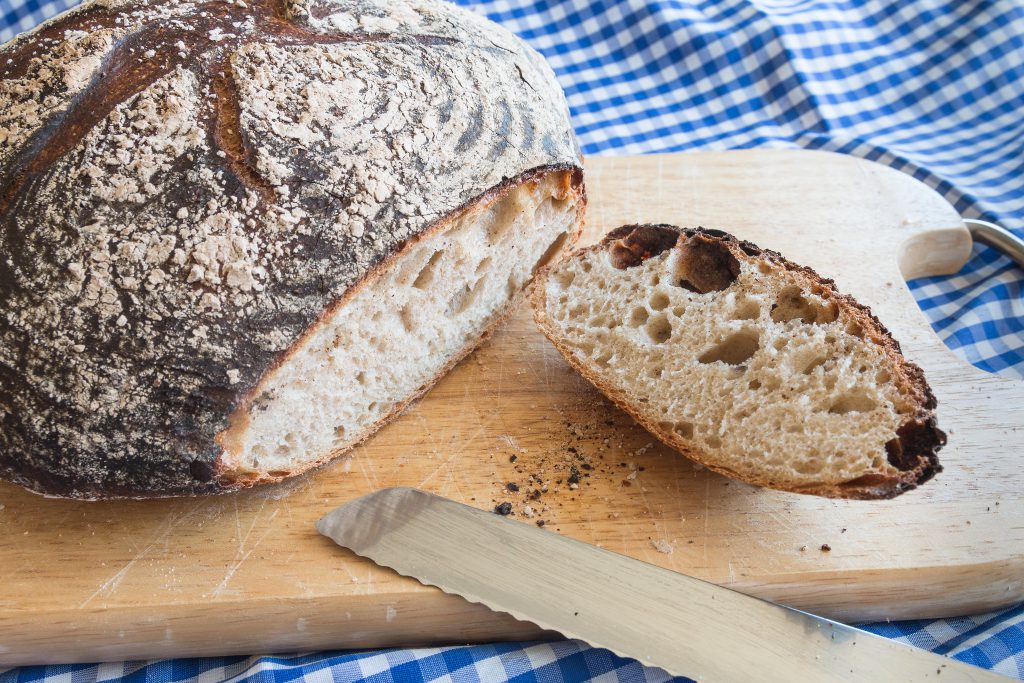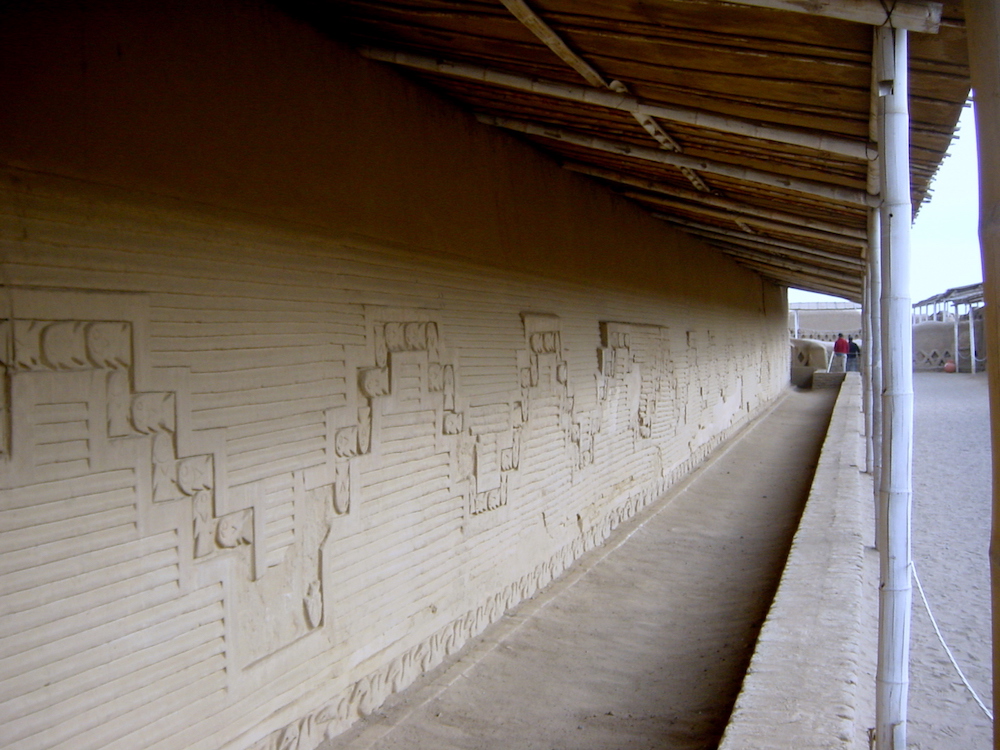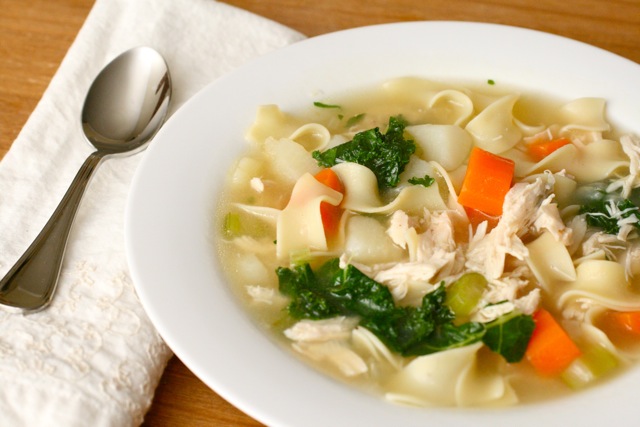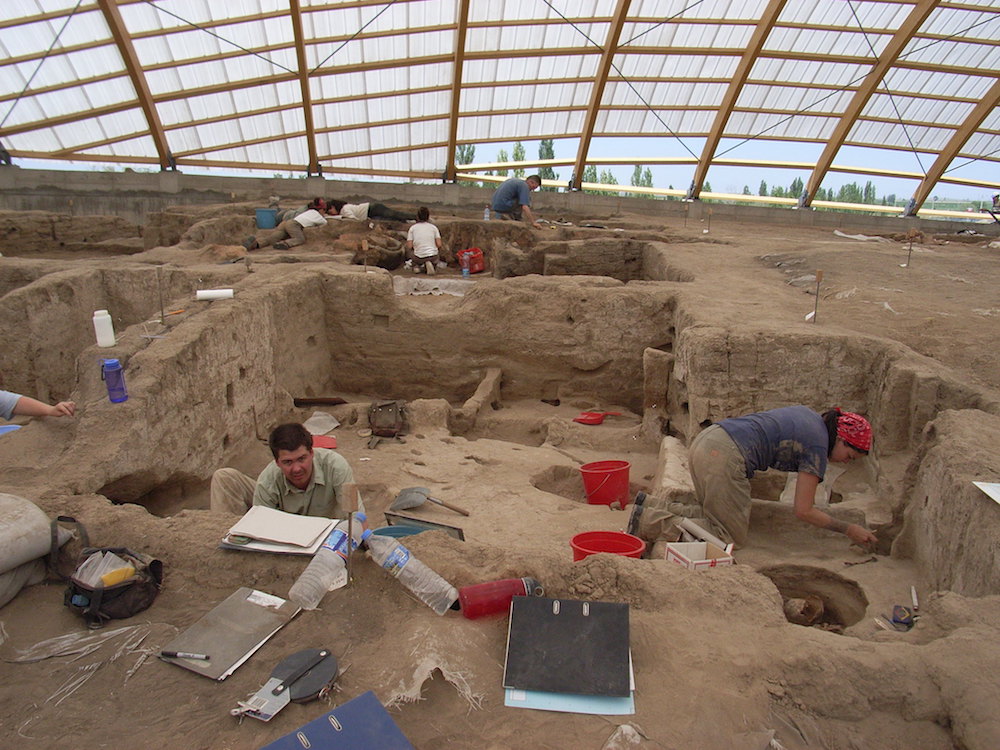Can Archaeology Explain the Bread Baking Craze?

As coronavirus social distancing wears on, my social media feeds have changed. Travel photos, parties, and concerts have disappeared, replaced by photos of scallion ends sprouting in a glass on a windowsill and crusty homemade sourdough with the perfect rise and crumb. Recipes on my favorite food blogs are different now too, emphasizing slow-cooked dry beans and simple pantry staples.
Why is a pandemic changing how some people eat in this way? And is there a chance any of these changes will persist after the threat of COVID-19 recedes?
Archaeologists study cultural change over deep time. Fads that pop up for a few months and then disappear may leave behind little evidence in the slow accumulation of household trash over centuries, and thus remain invisible to archaeologists.
Yet longer-term shifts in cuisine can be discerned by archaeological analysis and can shed light on the social, political, and economic circumstances that shaped them. Looking at the history of change—and continuity—in past cuisine helps us understand why many Americans are so obsessed with baking bread right now, and whether it will last.
My archaeological research uses cuisine as a window into the impact of imperial conquest on rural communities. About 800 years ago, the Chimú Empire expanded along Peru’s dry desert coast and conquered the Jequetepeque Valley, located over 400 miles north of the modern capital, Lima. Under Chimú rule, rural farmers faced increased demands to produce staples like corn and cotton. My archaeological excavations in the village of Pedregal, a few miles from the Chimú administrative center, show that farmers processed more of these staples, and fewer wild foods like fish or foraged plants, after the Chimú conquest.
Despite this shift in production, my work shows that their diet and cuisine remained remarkably stable.
Diet and cuisine are two different things. Diet refers to the set of foods we eat. Cuisine is broader, encompassing cultural ideas about how to prepare, share, consume, and understand these foods. Studying past diet tells archaeologists what plants and animals people ate; studying past cuisine reveals something about recipes, meals, and cooks.
At Pedregal, while the proportions of wild and farmed foods changed, the overall set of ingredients stayed the same. The community faced new labor demands after imperial conquest—people spent more time farming, and corn and cotton require intensive work to process into food and fiber. Yet farming kitchens were able to accommodate the new labor demands that resulted from imperial conquest without sacrificing daily household rhythms or culinary traditions. Cooks continued to use the same kinds of cooking pots and ceramic serving bowls to prepare shellfish from nearby shores, and to leave burned offerings of corn under the floors of their kitchens.
Pedregal villagers left no written records. But I believe that the continuity in cuisine and other household traditions that I have seen in the archaeological data could reflect deliberate and creative attempts to preserve cultural identity and buffer the impact of Chimú conquest. The rhythms of domestic life might have actively preserved a sense of stability and social cohesion even as life outside the home changed.
Periods of stress and change can prompt people to hold on to their diets and culinary traditions, as these rural farmers did in Pedregal, as a way of buffering uncertainty and upheaval. In other cases, social upheaval prompts the abandonment of some daily household practices and the adoption of new ways of cooking and eating—this had happened in the Jequetepeque Valley centuries before the Chimú conquest, when the Moche civilization collapsed.
Which way will the upheavals associated with the novel coronavirus pandemic send modern societies? Are American cooks investing energy into baking as a way to create comfort and ritual, or shifting to accommodate new social and economic conditions? And will any of these new domestic activities persist when the pandemic subsides?
Many scholars believe that both diet and cuisine are generally resistant to change. We develop preferences for flavors, dishes, and meals as children and, however adventurous we become as adults, certain things just taste like home. We internalize cultural and culinary values that tell us what a satisfying meal looks like or when it is appropriate to eat certain foods. These deep culinary preferences reflect, sustain, and pass along dimensions of our complex social identities, such as class, politics, ethnicity, religion, and culture.
Archaeologist Patricia Crown has traced how people ate in the U.S. Southwest over the past 10,000 years. She notes a few big dietary shifts, sparked first by the changing environment at the end of the last ice age, when people began to eat less big game and more seeds and nuts, and later by the introduction of domesticated corn, beans, and other plants. These dietary changes essentially reflected the availability of particular plants and animals due to climatic and cultural shifts. The basic outlines of a pre-Hispanic diet in the region were set after about 1,500 years ago.
Cuisine, however, continued to change in more complex ways, not necessarily related to the introduction of new foods. Larger grinding stones at archaeological sites across the region after A.D. 500 suggest that grinding corn into meal became a bigger priority, for example. The adoption of griddles or comales around A.D. 1200 indicates that cooks were more interested in toasting tortillas or paper-thin piki bread than making stews in clay pots. What prompted these shifts?
Crown explains these culinary changes from an economic perspective that views cuisine within a larger system. Cooks prepare food using available cooking tools and fuel within the broader social organization of labor that defines who does what kind of work. As cooks come up against perceived limitations or opportunities in one part of the system—a food shortage, a tool that needs expensive maintenance, a new cooking technology—they adjust to compensate. As many people in the U.S. Southwest settled into permanent villages after A.D. 500, the regional population increased, placing stress on limited food and fuel supplies. Periods of drought further stressed these resources.
Grinding corn into fine meal and cooking it quickly on a hot griddle allowed cooks to release the nutrients in corn while conserving fuel. However, compared to boiling corn and other ingredients into stews, it was incredibly labor intensive. Crown notes that the skeletons of women who lived at this time reveal the physical impact of kneeling in front of a grinding stone for hours each day. Cooks apparently understood the limitations—scarce fuel, large hungry families, a finite harvest—and decided to sacrifice their own time and energy to maximize nutrition. That sparked a culinary shift.
The nature of work in the home has changed. It should be no surprise that the way we cook has also shifted.
This logic provides one explanation for the explosion of sourdough bread on my Instagram feed. Self-isolated cooks perceive shortages of yeast and lack access to their usual range of prepared foods. Layoffs, furloughs, and economic uncertainty pose economic constraints. Cooks have more time at home to feed sourdough starters, prepare dough, and bake bread. The social organization of labor has changed under quarantine too. Household units are more isolated and self-contained by social distancing. Work, school, and leisure all take place at home for many families, collapsing distinctions between public and private spaces, and between career and family labor.
Essentially, the nature of work in the home has changed. It should be no surprise that the way we cook has also shifted toward labor-intensive recipes that transform inexpensive pantry items like flour and salt into delicious (and photogenic) sourdough loaves.
Economic perspectives like this one are useful, but they don’t tell us much about the social meaning of cooking particular foods.
Archaeologist Christine Hastorf investigated cooking and domestic life at the Neolithic village of Çatalhöyük, in modern Turkey. For over a thousand years, between 7400–6200 B.C., the community of Çatalhöyük remained remarkably stable. People ate a healthy diet of domesticated wheat and goats, foraged nuts and plants, and deer, game birds, and fish from the surrounding landscape. Archaeological investigations have recorded many microlayers of plaster, one on top of another, showing that people repeatedly renewed and remodeled their well-swept houses. Houses were so tightly packed together that people had to walk across their neighbors’ roofs to enter their own homes.
Hastorf suggests that repetitive domestic practices such as cooking and cleaning probably helped to promote social cohesion and stability over the long term at Çatalhöyük. People acted out the social order, day after day, and in so doing, they reinforced and perpetuated it.
Despite this overall sense of stability, a few cuisine changes occurred at Çatalhöyük over the long life of the community. Early in Çatalhöyük’s history, cooks boiled liquids by heating clay balls, dropping them into flammable bags or baskets, and removing them when they cooled, a process that required constant tending. As time passed, cooks began to use clay to make pots that could be set directly over the fire. This new technology would have reshaped cooks’ daily routines.
At the same time, the hearths and ovens where cooks spent much of their time became central to the floor plan, occupying more space in the highly decorated main living rooms where ancestors were buried. Hastorf interprets this change to reflect the increasing centrality of the cooks themselves in the daily life of the household. From Hastorf’s perspective, the pivotal place of the cook in daily life and the repetitive rituals of meal preparation and consumption established traditions that helped to reaffirm social identity and make collective sense of the world.
Making sourdough bread creates a domestic rhythm that provides some sense of stability and social cohesion in a time of disruption and anxiety. The colonies of yeast and lactobacilli in sourdough starter need regular feeding. The process of mixing, kneading, fermenting, and baking can take days. Bakers develop a feel for the right textures, timing, and smells to expect at each stage, and a habit of doing particular tasks in the same way. Moving through these sensory and physical rhythms grounds people in a sense of routine and tradition that provides purpose and perspective, all of which are particularly important during a time of social disruption.
The fad of making bread may fade as the economy reopens and the pandemic eventually recedes. New ways of sparking envy among Instagram followers may replace photos of crusty sourdough. Or, the pandemic (along with ongoing climate change) may reveal weaknesses in our global food-supply chain that cause a more permanent shift in our diets. Perhaps we will eat less meat or more local food—including foods literally made at home.
The current global situation may throw a spotlight on inequalities in the social organization of labor, or it may increase the dominance of a few global corporations. As in the ancient U.S. Southwest, cuisine might shift as cooks find themselves responding to new conditions and making new tradeoffs. As they do so, cooks will play a central role in making meaning out of the daily rhythms of domestic life, even if they are no longer making sourdough.




































